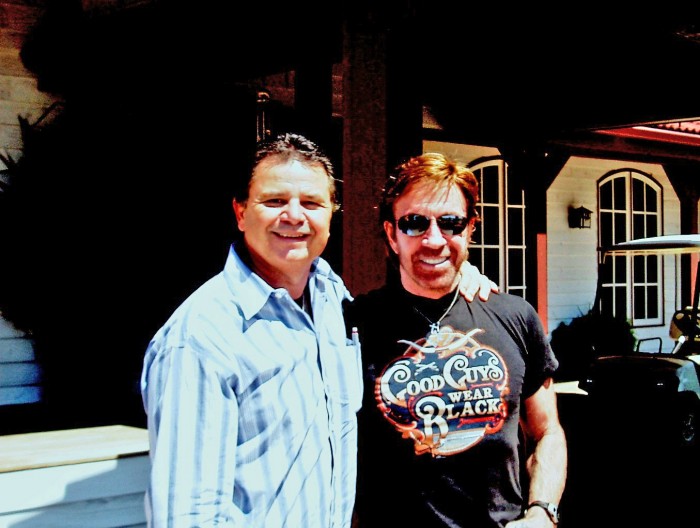How Did This Get Made? TOP DOG (An Oral History)
Note from Editor Peter Sciretta: I am excited to announce a new feature that will be appearing on /Film from Blake J. Harris, who you might know as the writer of the book Console Wars (a book which we've featured on the site), soon to be a motion picture produced by Seth Rogen and Evan Goldberg. Blake's new feature is a companion to the podcast How Did This Get Made with Paul Scheer, Jason Mantzoukas and June Diane Raphael which focuses on movies so bad they are amazing. Here is Blake's first column, an oral history of the movie Top Dog.Chuck Norris + Loveable Pup + Neo-Nazi Terrorists = How Did This Get Made?!?!
Nobody sets out to make a bad movie. But the truth is, it happens all the time. And every time it does, there's a fun misadventure and cautionary tale lurking somewhere behind the scenes. This is that story for the Chuck Norris anticlassic TOP DOG...
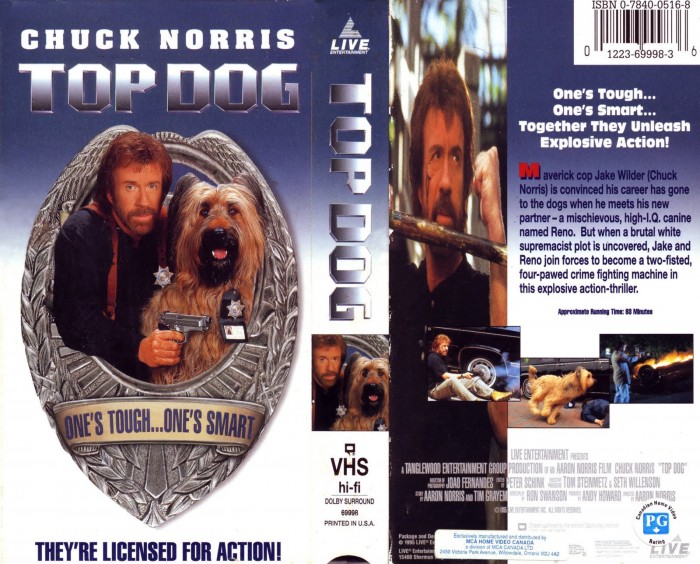 Synopsis: Jake Wilder (Chuck Norris) is reluctantly partnered with a police dog named Reno whose handler has just been murdered. Together, this unlikely duo sets out to take down a crew of ruthless, white supremacist, domestic terrorists.Tagline: They're Licensed for Action!
Synopsis: Jake Wilder (Chuck Norris) is reluctantly partnered with a police dog named Reno whose handler has just been murdered. Together, this unlikely duo sets out to take down a crew of ruthless, white supremacist, domestic terrorists.Tagline: They're Licensed for Action!
At first glance, Top Dog seems like a misguided, mad-libs-like attempt to resurrect the magic of Turner & Hooch (and the mediocrity of K-9), by swapping out Tom Hanks (and Jim Belushi) for action star Chuck Norris. And, to some degree, that's exactly what this movie is. But, at the same time, it's also an admirable effort by a pair of likeable brothers—both stand-up guys, both karate masters—to make a gore-free, high-integrity action film that could be enjoyed by the whole family. Unfortunately though, that's not quite how things turned out.
Here's what happened, as told by those who made it happen...
Featuring:
PART 1: Old Dog, New Tricks
Tim: Interestingly enough, the whole idea for Top Dog came about while riding my bike with Aaron Norris. He and I, we started out as neighbors—living in Santa Clarita—then quickly became great friends. We used to get up every morning at 6:00 AM and ride our mountain bikes up this giant hill on Sand Canyon road. And, well, what started out as our morning exercise turned into a daily creative exchange. Keep in mind that I'm a businessman—I ran a company at the time and still do to this day—but as Aaron and I huffed and puffed up that hill we started talking about scenes and dialogue for a buddy cop movie, but with a dog, that could star Aaron's brother Carlos (that's Chuck's real name, and what his friends call him). At first, it was all just playful fun, but Aaron Norris, who is infinitely creative, began to flesh out an actual movie.Seth: I got approached by Chuck's brother, Aaron, and his partner, Andy Howard (who had produced a lot of Chuck's movies through private financing) to ask if I could help out with this movie. So that's how I got involved; I helped them raise part of the financing and find distribution for the picture. Top Dog, really, was a follow-up on the interest of Chuck Norris to do family films.Tim: Chuck had just done this great movie Sidekicks, so the idea that Aaron and I were talking about made a ton of sense. And, over time, we realized that we had a great story and we knew that Carlos was a natural with a dog. Plus, most people didn't know how humorous Carlos could be on film. And, after all, Chuck Norris was "top dog" then, just as he still is now.Chuck may have been top dog, but initially he didn't want to do the film. That's because, just one year earlier, his television show Walker, Texas Ranger had come out on CBS. And with the show being renewed for a second season, he didn't want to spend his summer hiatus on a film set. "But then I finally read it," Norris stated in interviews at the time, "and I said: Oh man. This is the funniest thing!" And just like that, he was in. Tim: Right off the bat, we knew we had a winner.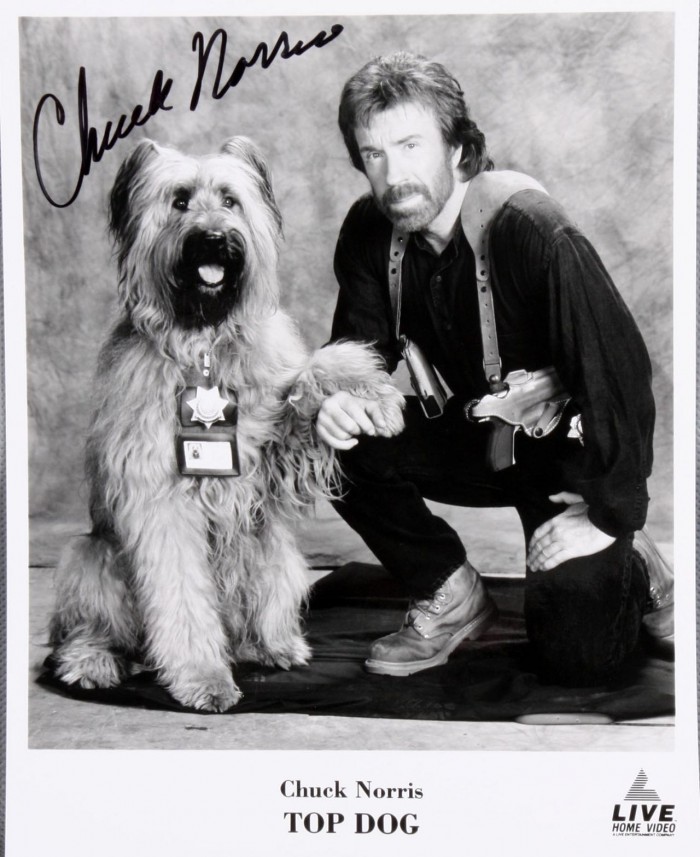 Seth: I think the idea was well conceived at the time, it was actually a smart conception.Peter: First of all, Aaron was a sweetheart of a guy. Wonderful to work with. But the Chuck Norris genre has always been, I would say, derivative of something else. And this was really a version K-9 or a version of Turner and Hooch. So they basically, you know, "borrowed" the script to one of those and decided that they would apply it to Chuck. And that's what it was.Seth: K-9 and Turner and Hooch? Those were great movies, sure, but that certainly wasn't something we were consciously aware of while putting the film together.Peter: From a distance, maybe the idea of Chuck Norris doing a kids movie seems odd, but he had just done Sidekicks and that made a lot of money. So they were trying to take Chuck's career in a different direction; away from the Delta Forces and more towards things like this.Seth: Specifically with Top Dog, it really wasn't that complicated. Chuck wanted to be in this area. Chuck has always been involved with what I would call "Family Heartland" values, so this was a good idea. And there's a market for these kind of films.With a vision behind the concept, and the financing coming in to place, Aaron Norris and his colleagues at Tanglewood Entertainment started putting the cast and crew into place. Peter: I was just one of these strange kids who had a Super 8 camera. I loved making films, loved everything about it, and built my own little editing room in my closest when I was just 9 years old. Later on, I went to Loyola Marymount for film school. And when I graduated, of course, I wanted to be a writer and director. But I looked around and everyone else wanted to be the same thing. So I said: hmmm...I need to do something to distinguish myself. And I had a background in editing so that's the route I went.Tim: One of the things that makes Aaron so great is that he doesn't just know how to find the right people, but he knows how to inspire them as well. What I mean is that after the guy speaks with you, you're practically floating on air. He knows how to get the best out of people and fill them up with confidence.Peter: What happened was that Michael Duthie, a great British editor, had made his name cutting the Chuck Norris films back in Chuck Norris' heyday. I don't quite remember if Michael had another project, or if he'd done enough Chuck Norris movies but he knew about me from Roy Watt's [Peter's mentor]. He knew that I had just done The Chase with Charlie Sheen, and so Michael got in touch with me and said that I'd really like working with the Norris brothers.Seth: It was a time when the video business [meaning VHS] was becoming very popular and where cable and pay television could have a good impact as well. From a business and economic standpoint, Top Dog was a good investment.Peter: So I went and met Aaron Norris and he was just a tremendously nice guy. I don't think I've ever been in a meeting before where, at the end, the guy grabs you in a bear hug and lifts you off the ground.Boone: I got a call from someone over there at Tanglewood Entertaiment. He said: hey, we're interviewing a few animal trainers to do this movie with Chuck Norris. Would you come down for an interview?" Sure thing! And so I went down there and we just hit it off. In fact, when I walked in to the office, someone there said to me "
Seth: I think the idea was well conceived at the time, it was actually a smart conception.Peter: First of all, Aaron was a sweetheart of a guy. Wonderful to work with. But the Chuck Norris genre has always been, I would say, derivative of something else. And this was really a version K-9 or a version of Turner and Hooch. So they basically, you know, "borrowed" the script to one of those and decided that they would apply it to Chuck. And that's what it was.Seth: K-9 and Turner and Hooch? Those were great movies, sure, but that certainly wasn't something we were consciously aware of while putting the film together.Peter: From a distance, maybe the idea of Chuck Norris doing a kids movie seems odd, but he had just done Sidekicks and that made a lot of money. So they were trying to take Chuck's career in a different direction; away from the Delta Forces and more towards things like this.Seth: Specifically with Top Dog, it really wasn't that complicated. Chuck wanted to be in this area. Chuck has always been involved with what I would call "Family Heartland" values, so this was a good idea. And there's a market for these kind of films.With a vision behind the concept, and the financing coming in to place, Aaron Norris and his colleagues at Tanglewood Entertainment started putting the cast and crew into place. Peter: I was just one of these strange kids who had a Super 8 camera. I loved making films, loved everything about it, and built my own little editing room in my closest when I was just 9 years old. Later on, I went to Loyola Marymount for film school. And when I graduated, of course, I wanted to be a writer and director. But I looked around and everyone else wanted to be the same thing. So I said: hmmm...I need to do something to distinguish myself. And I had a background in editing so that's the route I went.Tim: One of the things that makes Aaron so great is that he doesn't just know how to find the right people, but he knows how to inspire them as well. What I mean is that after the guy speaks with you, you're practically floating on air. He knows how to get the best out of people and fill them up with confidence.Peter: What happened was that Michael Duthie, a great British editor, had made his name cutting the Chuck Norris films back in Chuck Norris' heyday. I don't quite remember if Michael had another project, or if he'd done enough Chuck Norris movies but he knew about me from Roy Watt's [Peter's mentor]. He knew that I had just done The Chase with Charlie Sheen, and so Michael got in touch with me and said that I'd really like working with the Norris brothers.Seth: It was a time when the video business [meaning VHS] was becoming very popular and where cable and pay television could have a good impact as well. From a business and economic standpoint, Top Dog was a good investment.Peter: So I went and met Aaron Norris and he was just a tremendously nice guy. I don't think I've ever been in a meeting before where, at the end, the guy grabs you in a bear hug and lifts you off the ground.Boone: I got a call from someone over there at Tanglewood Entertaiment. He said: hey, we're interviewing a few animal trainers to do this movie with Chuck Norris. Would you come down for an interview?" Sure thing! And so I went down there and we just hit it off. In fact, when I walked in to the office, someone there said to me "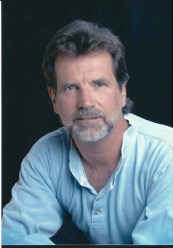
Hey, you look like you could be one of the Norris brothers." And Aaron said "Yeah, you could be our brother!" And I'd never thought about it before, but I gotta admit that we did have the same kind of general look.
Tim: He did bear a rather strong resemblance.Boone: Maybe that's part of why I was hired, but there's another part of it too. A lot of people in this business—and I'm sure in yours too—they tell you what you want to hear and not what's really is going to happen. And I just told them the real ins and outs of working with animals. And the hardest thing about my job is making the dog look like he belongs to the actor and not have him looking at me. To do that, the eye-lines need to be right and I'm gonna need to step on some dialogue to get a cue in. And some actors really don't like that; having their lines stepped on or not having the eye-line they want. So I wanted to be up front about all of this. Because, you know, I certainly didn't want to upset Chuck and have him go all Kung Fu on me.Peter: Boone was a really good guy. I enjoyed working with. And, if I'm not mistaken, he's become one of the top guys in the animal training profession.Boone: How did I become an animal trainer? Well, I don't know that one sets out to do this. But what happened was I had gotten back from Vietnam and a friend of a friend said "what are you gonna do?" And I said I'm going to mellow out before I figure out what to do with myself. He told me that there was this place that trains animals for the motion picture business. I thought: someone actually trains those animals? Before that, the thought had never crossed my mind. Never thought of it, not once. But it sounded interesting so I went up there and they gave me a job cleaning up after the animals; shoveling shit, mostly. And I kind of worked my way from one end of the animals to another. I liked it and I was good at it—and you usually like what you're good at. I did that for eight years and then I started my own business. And I've done my own business for 30 years.Over that time, Boone Narr has worked on films such as Buddy, The Green Mile and the Pirates of the Caribbean trilogy. Boone: When I started out, I was basically doing exotic animals. Lions, tigers, leopards, bears, elephants and you name it. And I did that for years and years and years. But as time went on, and it became less favorable to have exotic animals in the pictures, I gravitated more towards dogs and cats. But there were a lot of guys who did dogs and cats so I thought: okay, I need to sort of distinguish myself to kick it up a notch. So we kind of became the company where if something wasn't going right, or it was a difficult movie to do, we were kind of the go-to guys. We built our reputation on that.And so, with a team now in place, production for Top Dog was ready to begin.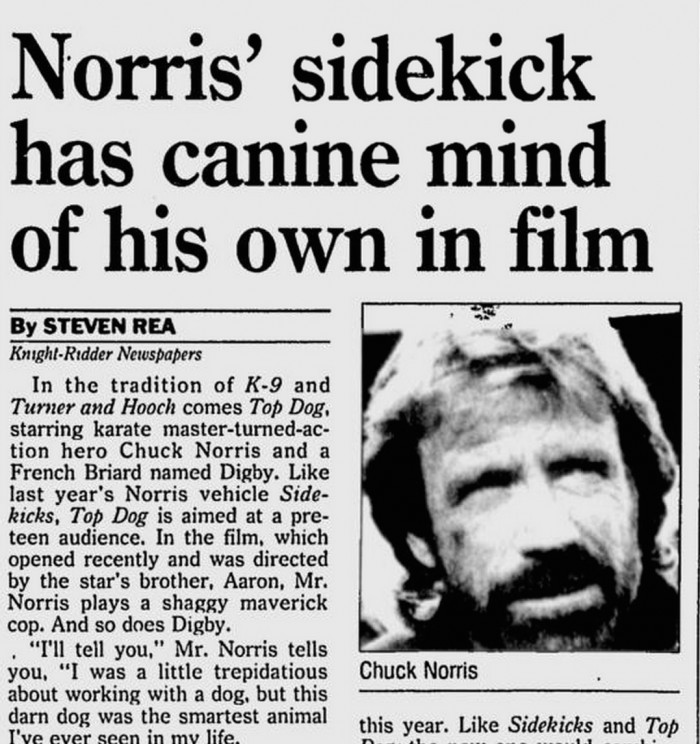
Part 2: The Dog and Pony Show
Boone: Just like every person can't be an actor, every dog can't be an actor. You need to cast an animal that enjoys work and wants to work. You and the animal gotta become one; because it's easy to train a dog when there's no one else around. But imagine hiding in the bush, and trying to get the dog to pay attention to the scene (and not you). So you need to cast the right animal. I think it's probably the same with an acting coach; he's not gonna spend time on some kid who's just got no shot of making it.Peter: I forget what the breed the dog was...French Briard, maybe?Boone: When you're casting an animal for a picture, you should cast as close as possible to how the script reads. So we came up with a Briard.Peter: The dog was fantastic. Although, personally, I found the choice of breed to be a little odd. It doesn't strike me as a particularly menacing police dog.Boone: The thing was, it couldn't be too much of a Benji-looking dog. And it had to have that massive structure, to be a big dog, but it also had to be a comical-looking dog. And a smart-looking dog. So the Briard seemed to fit everything.Since the dog playing Reno would have such a big workload, two dogs were actually cast to fulfill the role: Digby and Betty. Boone: Digby was our face dog; he just had a gorgeous-looking face. In fact, in every PR shot you see of Chuck and the dog, that's Digby. So he was our lead dog. But Betty did a lot of shots in the movie too. She was real mellow and she was a good dog. Except the problem with Betty was that she had had puppies earlier that year. So she had this one breast that would hang down. And every time, before we shot with her, we'd have to tape it up. We had to give her a boob job every time before we did a shot! So Aaron would be looking through the camera and he'd go "Betty's boob is hanging out." And then I'd go up there and tape it up. Poor thing, she just needed some cosmetic surgery that we couldn't afford at the time.Peter: As with most pictures, I came on a few days before shooting. And we shot down in San Diego. We had two cutting rooms at the Marriot, which actually turned out to be a pretty plush place to edit.Boone: We all stayed in the same hotel. The cast and crew. And there was some camaraderie there, certainly, but the thing you have to remember is...you're putting in 16 hours a day, and you get back to the hotel, you don't want to see those other people! But, you know, I'm tired. And the dogs have to stay with me. We'd split the dogs up between myself and David [Knight] who's been working with me for years. He took one and I took one in the room. And even on the weekends, with the animal; it's not like a piece of equipment you put in the truck and lock the door.Peter: We would get our dailies shipped in from LA every day and we were cutting on film at that point in time. And I think we had a little screening room somewhere in the hotel and we would sit down with Aaron and we'd take notes on the things he liked and didn't like and we'd cut them together. And the movie cut together fairly quickly.Boone: The director of a film can make or break you. And I would say that Aaron very much helped me not fail on that movie.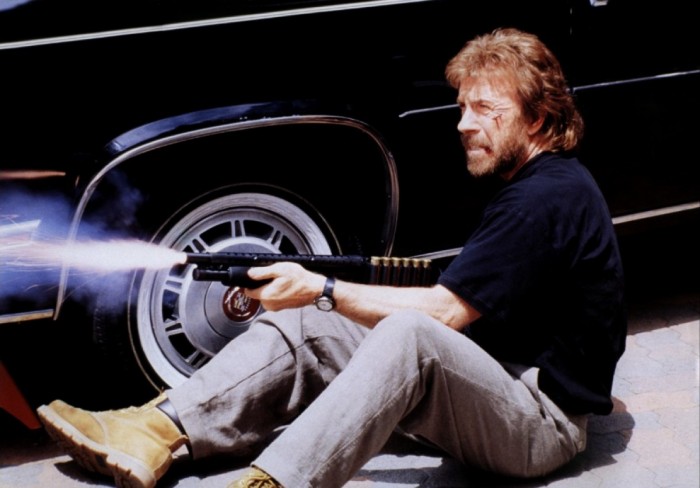 Peter: Unlike other filmmakers, who shoot a lot and then figure it out later, the Norris brothers are very utilitarian. They know what they want, they go and they shoot what they want and they've been doing it forever. And some people may not agree with their taste, but they go in, shoot it and get it. The structure is very laid out. So by the time I get in there, it's basically: take one is better than take two, and there you go.Boone: I never felt that Top Dog was going to be a blockbuster. But Chuck has his fans and I thought they'd like him in this particular character.Peter: One thing I think the film struggled with—with respect to tone—was the sort of crossover between a very real world, dark villain and a happy-go-lucky canine storyline. So I think that there's sort of a vestige from Chuck's past where they said "okay, we'll just take one of the villains out of Chuck's old movies and plug him into this one." So the misstep, in my opinion, is this White Supremacist Domestic Terrorist Organization...in a kids movie. That's where it starts to go wrong.Tim: Well, there was something that Aaron and I both wanted to say about racism and we hoped that using white supremacists as our bad guys we actually might drag some of that trash into the light of day.Peter: Yeah, I mean they could have picked bank robbers...jewel thieves...something. But Neo-Nazis? Not so good.Tim: Further, Aaron and Carlos both have strongly held beliefs about equality for people and hate racism and they both love dogs.Peter: There were some folks at Live [the distributor] that were not happy with the first cut and I think we toned down the Neo Nazis a bit. But not to such a respect that there's no big missing chunks I can tell you about.Tim: It was a story that needed to be told. And Carlos was the perfect guy to tell it. He's just a wonderful guy with great morals and I never felt that he got enough credit for that.Peter: Look, I don't mean to disparage Chuck too much, but from an editing standpoint we would always sort of say, "When in doubt, cut to the dog!" Because that dog was really solid.Tim: The dog really was great.Seth: Everyone loved that dog.Peter: But, you know, Chuck is Chuck because of his background in martial arts. He may not be Robert DeNiro, but he busts his ass. And he takes his craft seriously to the best of his ability. You know, he has someone there really trying to work with him and get more out of him. He puts the work in to be as good as Chuck can be, and he has an acting coach on the set at all times.Boone: The other thing is we always have a member of the Humane Society on set. Always. I have that in my contract. We don't want to harm the dog and we don't want anyone to have the perception. So like, in the movie, when we threw the dog in the water, we don't want anyone to think we're mistreating the dog...though, in that case, it was a fake dog. But you still get letters. How could you let them throw that dog in the water? When I did the Green Mile and we stomped the mouse, I got thousands of letters. How could you let them stomp the mouse? But we didn't! I mean, come on people, we created the illusion. It's a movie! But people believe it. Which, actually, I like. It means that we're doing a good job. I like it when I get angry letters like that. I'm like a magician and those letters mean that I pulled it off. I want you to get upset. I want you to feel that emotion, because that's what I'm there to do; make you think I did it.
Peter: Unlike other filmmakers, who shoot a lot and then figure it out later, the Norris brothers are very utilitarian. They know what they want, they go and they shoot what they want and they've been doing it forever. And some people may not agree with their taste, but they go in, shoot it and get it. The structure is very laid out. So by the time I get in there, it's basically: take one is better than take two, and there you go.Boone: I never felt that Top Dog was going to be a blockbuster. But Chuck has his fans and I thought they'd like him in this particular character.Peter: One thing I think the film struggled with—with respect to tone—was the sort of crossover between a very real world, dark villain and a happy-go-lucky canine storyline. So I think that there's sort of a vestige from Chuck's past where they said "okay, we'll just take one of the villains out of Chuck's old movies and plug him into this one." So the misstep, in my opinion, is this White Supremacist Domestic Terrorist Organization...in a kids movie. That's where it starts to go wrong.Tim: Well, there was something that Aaron and I both wanted to say about racism and we hoped that using white supremacists as our bad guys we actually might drag some of that trash into the light of day.Peter: Yeah, I mean they could have picked bank robbers...jewel thieves...something. But Neo-Nazis? Not so good.Tim: Further, Aaron and Carlos both have strongly held beliefs about equality for people and hate racism and they both love dogs.Peter: There were some folks at Live [the distributor] that were not happy with the first cut and I think we toned down the Neo Nazis a bit. But not to such a respect that there's no big missing chunks I can tell you about.Tim: It was a story that needed to be told. And Carlos was the perfect guy to tell it. He's just a wonderful guy with great morals and I never felt that he got enough credit for that.Peter: Look, I don't mean to disparage Chuck too much, but from an editing standpoint we would always sort of say, "When in doubt, cut to the dog!" Because that dog was really solid.Tim: The dog really was great.Seth: Everyone loved that dog.Peter: But, you know, Chuck is Chuck because of his background in martial arts. He may not be Robert DeNiro, but he busts his ass. And he takes his craft seriously to the best of his ability. You know, he has someone there really trying to work with him and get more out of him. He puts the work in to be as good as Chuck can be, and he has an acting coach on the set at all times.Boone: The other thing is we always have a member of the Humane Society on set. Always. I have that in my contract. We don't want to harm the dog and we don't want anyone to have the perception. So like, in the movie, when we threw the dog in the water, we don't want anyone to think we're mistreating the dog...though, in that case, it was a fake dog. But you still get letters. How could you let them throw that dog in the water? When I did the Green Mile and we stomped the mouse, I got thousands of letters. How could you let them stomp the mouse? But we didn't! I mean, come on people, we created the illusion. It's a movie! But people believe it. Which, actually, I like. It means that we're doing a good job. I like it when I get angry letters like that. I'm like a magician and those letters mean that I pulled it off. I want you to get upset. I want you to feel that emotion, because that's what I'm there to do; make you think I did it.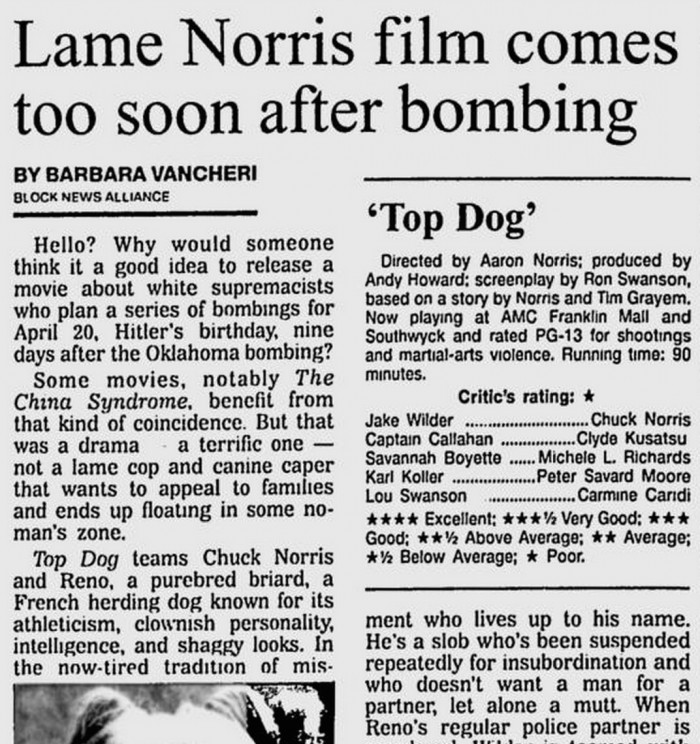
PART 3: Dog Eat Dog World
Seth: Look, people are interested in movies. Why movies get made, and how they get made it's an interesting area that you're going in. I've been in this business since 1971 and I used to think that intelligence and analysis were enough to make a successful movie. But what I found was that making a movie was like being at war. You need the experience and the instinctive judgment to really do it right.Peter: The week that Top Dog was coming out, I had just started to date a new girl. And I remember thinking: it's coming out in Westwood, I'll take her to see the movie on opening day. There will be all these people there; that might impress her.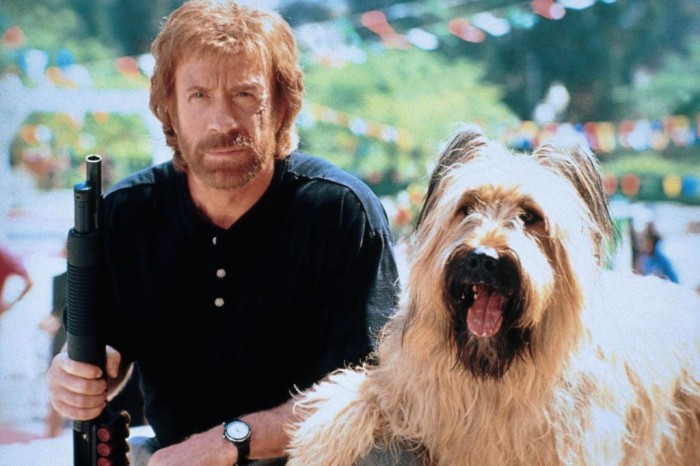 Tim: Well, that same week the Oklahoma City bombing tragedy happened and not so many people wanted to relive the idea of white supremacist people blowing up buildings.Peter: As I recall, one of the first scenes in the movies is these two domestic terrorists planting a bomb in a building and blowing it up. So, as it turned out, my date and I were the only two people in the theater. On a Friday. Opening Day.Tim: I believe actual historic events prove that the film was prescient but it was injured at the box office because the country was in mourning about Oklahoma City.Seth: That's true, but more significant was that I had I actually sold it to Turner on behalf of the Norris'. And then it got caught up in the merger between Turner and Warner Bros. so it didn't get as much exploitation—which is a word that we used in the movie business to mean "distribution."Boone: But I gotta say: some of the best movie experiences of my entire career were ones that were stinkers. But making them was fun.Peter: In all honesty, it was probably one of the most pleasant productions that I was ever on.Seth: It wasn't a break-out hit, but I think it was a successful business and creative venture that met the needs of the people involved. Which doesn't happen that often.Boone: Looking back on Top Dog, the first thing I think about is my son. During production he came out one day to see me. He was 16 years old at the time, living with his Mom in Oklahoma. It was a big deal for him to be on set with Chuck Norris. A big deal for me too. But when the cameras start rolling, I get to working non-stop. So I don't see my son until we wrap for the day. Then he and I, we load up the dogs, get in the truck and start driving off. But after a minute or so, a cop pulls me over. He comes over to my window and asks "is that your son?" Now look, I thought my son was a good kid, but when you're divorced and only see your son but once a year, they're different people, you know? So all these weird things are going through my head. So I go: "yes, sir, that's my son." And then the cop leans closer and says, "I work with juvenile kids all the time and I just want to tell you that your son is the nicest kid I've ever met." Turns out it was the cop from on set, and my son had spent the whole day on set hanging out with him. "You have a hell of a son," the cop says before leaving. And so, whenever I think of Top Dog, I think of my son. I even keep a poster from that movie in my man cave for that very reason.Peter: How do I feel about having films like Top Dog and Barb Wire on my resume? I embrace it. I'm proud of the work that I've done. Plus, you know, when I stand up in front of the class I teach at Emerson college I get to say: [with faux confidence] yup I'm the guy who worked with both Chuck Norris and Pam Anderson...but I still put my pants on one leg at a time just like the rest of you.
Tim: Well, that same week the Oklahoma City bombing tragedy happened and not so many people wanted to relive the idea of white supremacist people blowing up buildings.Peter: As I recall, one of the first scenes in the movies is these two domestic terrorists planting a bomb in a building and blowing it up. So, as it turned out, my date and I were the only two people in the theater. On a Friday. Opening Day.Tim: I believe actual historic events prove that the film was prescient but it was injured at the box office because the country was in mourning about Oklahoma City.Seth: That's true, but more significant was that I had I actually sold it to Turner on behalf of the Norris'. And then it got caught up in the merger between Turner and Warner Bros. so it didn't get as much exploitation—which is a word that we used in the movie business to mean "distribution."Boone: But I gotta say: some of the best movie experiences of my entire career were ones that were stinkers. But making them was fun.Peter: In all honesty, it was probably one of the most pleasant productions that I was ever on.Seth: It wasn't a break-out hit, but I think it was a successful business and creative venture that met the needs of the people involved. Which doesn't happen that often.Boone: Looking back on Top Dog, the first thing I think about is my son. During production he came out one day to see me. He was 16 years old at the time, living with his Mom in Oklahoma. It was a big deal for him to be on set with Chuck Norris. A big deal for me too. But when the cameras start rolling, I get to working non-stop. So I don't see my son until we wrap for the day. Then he and I, we load up the dogs, get in the truck and start driving off. But after a minute or so, a cop pulls me over. He comes over to my window and asks "is that your son?" Now look, I thought my son was a good kid, but when you're divorced and only see your son but once a year, they're different people, you know? So all these weird things are going through my head. So I go: "yes, sir, that's my son." And then the cop leans closer and says, "I work with juvenile kids all the time and I just want to tell you that your son is the nicest kid I've ever met." Turns out it was the cop from on set, and my son had spent the whole day on set hanging out with him. "You have a hell of a son," the cop says before leaving. And so, whenever I think of Top Dog, I think of my son. I even keep a poster from that movie in my man cave for that very reason.Peter: How do I feel about having films like Top Dog and Barb Wire on my resume? I embrace it. I'm proud of the work that I've done. Plus, you know, when I stand up in front of the class I teach at Emerson college I get to say: [with faux confidence] yup I'm the guy who worked with both Chuck Norris and Pam Anderson...but I still put my pants on one leg at a time just like the rest of you.
The feature is a companion to the podcast How Did This Get Made with Paul Scheer, Jason Mantzoukas and June Diane Raphael which focuses on movies so bad they are amazing. You can listen to the Top Dog episode of the How Did This Get Made podcast on the HDTGM website.

